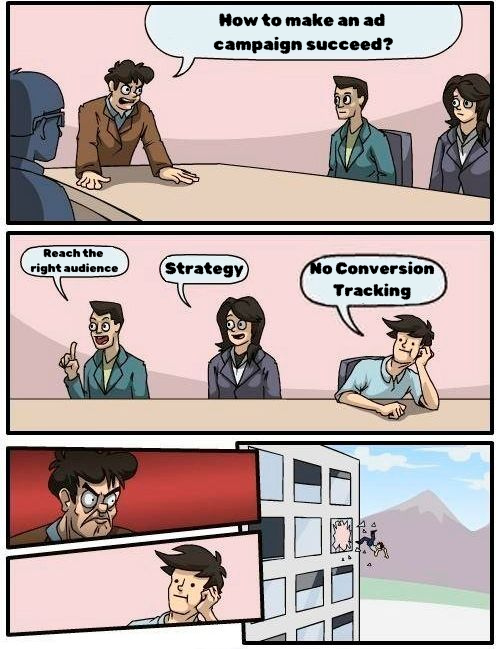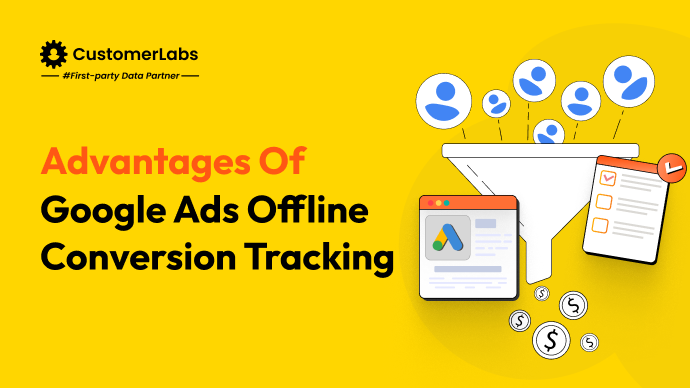
Haha, Jokes aside. In the ever-evolving world of digital marketing, understanding and implementing effective eCommerce conversion tracking is not just an advantage—it’s a necessity.
In this comprehensive guide, we will delve deep into the intricacies of conversion tracking, optimizing your ad campaigns with conversion events, and how leveraging a tool like CustomerLabs 1PD OPs can significantly enhance your tracking and ad optimization efforts.
Introduction to eCommerce conversion tracking
Imagine having the ability to pinpoint exactly which of your ad campaigns are hitting the mark and which ones need a tweak. That’s why you need conversion tracking.
Marketers usually think conversion tracking simply means tracking conversions like purchases or subscription events.
But that doesn’t confine to just tracking purchases. It’s about tracking and understanding every action a user takes on your store, both online and offline(if you have a physical store).
Once you’ve set up conversion tracking, you will be able to get a complete picture of your customer journey by collecting the data starting from the ad that led them and all the actions they perform on your website(and physical store if you have one).
Moreover, it’s not just collecting, but also sending the collected data to ad platforms for better optimization of ad campaigns.
But there’s a problem(or two)
- Data Privacy Regulations: With GDPR, CCPA, and updates like iOS14, marketers face stricter data privacy regulations.
- Deprecation of Third-Party Cookies: The shift away from third-party cookies means that marketers need to come up with new ways to track conversions.
Despite these challenges, the benefits of mastering eCommerce conversion tracking are immense, from improving the accuracy of your campaign attributions to enhancing your overall marketing ROI.
Implementing advanced tracking technologies
Server-Side Tracking
When using server-side tracking, data is sent directly from your server to the analytics server, bypassing the client’s browser. This method provides enhanced security and privacy by reducing the amount of data processed and stored in the user’s browser. Additionally, it is less vulnerable to issues such as ad blockers.
Conversions API
Platforms such as Meta and LinkedIn have Conversions API that allow marketers to send events directly from their servers to the platform. This method is highly effective in places where browser-based cookies are blocked or restricted. It ensures data accuracy and provides a more reliable way to track user interactions.
Establishing a robust conversion tracking system
1. Define key conversions
First, identify what makes a conversion on your website.
This could be:
- Purchase
- Add to Cart
- Initiate Checkout
- Complete Registration
2. Select the right tools
Utilize tools that facilitate effective conversion tracking such as:
- Google Analytics: To monitor interactions and provide traffic insights on Google Ads.
- Facebook Pixel: To tracks Facebook ad interactions.
- Customer Data Platforms: Use tools like CustomerLabs 1PD OPs to integrate data across multiple touchpoints.
3. Implement tracking codes
Implement the necessary codes on your site to track the conversions.
This involves:
- Adding JavaScript snippets to your site’s header.
- Using Google Tag Manager for easier script management.
Set up conversion goals in your analytics tools
Configure your chosen analytics tools to recognize and record your defined conversions:
- For Google Analytics: Set up goals based on specific criteria like visited URL, session duration, pages/screens per session, or custom events.
- For Meta Pixel: Create events for specific actions you want to track on Facebook ads, such as “Purchase” or “Lead.”
Leveraging conversion events to optimize ad campaigns
Understanding conversion events
Conversion events are specific actions taken by users that you track to evaluate the effectiveness of various marketing efforts.
Below are the key events you need to consider:
- Page view
- Product view
- Category viewed
- Added to cart
- Added to wishlist
- Abandoned cart
- Purchase made
- Recurring purchase
- Subscription made (for subscription-based eCommerce)

Go beyond standard purchase events by setting up events based on:
- Product categories: Track purchases by category to optimize ads for specific product lines.
- Average Order Value (AOV): Focus on products or categories that yield higher AOV.
- Combination of Category and AOV: Target high-value conversions in specific categories.
Analyzing conversion data
Use conversion data to identify trends and make data-driven decisions to enhance your campaigns.
Here’s how you can do it:
- Address low add-to-cart rates by refining product pages.
- Reduce cart abandonment by streamlining the checkout process and employing retargeting strategies.
Practical applications: Case studies
One of our eCommerce clients in the FMCG industry who has products in various categories, has ditched Shopify CAPI and leveraged CustomerLabs.
They improved their ad campaigns by focusing on Average Order Value (AOV) and product categories. This led to better results, especially on Meta Ads. They did this by creating custom events based on AOV to help train Meta’s ad algorithm for maximizing conversion value.
The AOV-based conversion events are as follows:
- High AOV purchase (e.g., above $1000)
- Mid AOV purchase (e.g., between $500 and $1000)
- Low AOV purchase (e.g., below $500)
These custom events allow the algorithm to optimize for securing higher AOV purchases, as they also have the highest EMQ score.

Similarly, they also optimized the ad campaign for the purchase event of a particular category(for example, Biryani Masala).
They’ve taken it a step further, by also optimizing their campaigns with the purchase event of Biryani Masala with high AOV as well.
All these efforts have boosted their overall ROAS by 35% and pushed down their CAC by 45%.

How CustomerLabs scales your eCommerce marketing
1. No more cookie deletion: 1P domain tracking
The browsers may have certain limitations, such as those enforced by Safari and Firefox’s ITP framework, which deletes cookies after seven days.
By choosing CustomerLabs for eCommerce conversion tracking, you gain access to 1P (first-party) domain tracking.
With 1P domain tracking, you can implement first-party cookies that comply with data privacy regulations. They last a lifetime and accurately track user actions across multiple browsing sessions.
The outcome? You achieve improved and accurate attribution in your ad campaigns.
2. Complete data without signal loss
Can you imagine sending the data without any signal loss?
That’s what CustomerLabs does.
It provides you with complete data on which users are converting and which are not.
This complete data allows Google Ads to attribute conversions to specific campaigns accurately.
With better attribution, you can optimize and scale your ad campaign performance effectively.
3. The fuel to ad algorithms
Your car cannot run without petrol.
The same goes for ad algorithms. High-quality first-party data is the fuel to train your ad algorithms.
CustomerLabs helps collect that high-quality first-party data and share it with ad platforms, which rely on machine learning algorithms.
Using this data, the machine learning algorithms expand the audience reach in the right direction, thereby enabling better audience segmentation and scaling the overall marketing performance.
4. Activating anonymous website visitors
When you use CustomerLabs to track your eCommerce conversions, you’re not just collecting anonymous website visitor data, but also activating these visitors across ad platforms.
CustomerLabs has also patented this technology which enables activation, achieving 40-60% better match rates for anonymous website visitors.
5. Segment for better understanding
CustomerLabs provides segmentation strategies to understand your customer journey better.
You can segment your audience based on specific behaviors such as “viewed the product 3 times,” and “visitors of your website last Christmas.”
Then you can understand the intent of the users, and personalize the ad campaigns for increased conversion rates.
Why conversion tracking is critical for eCommerce success
eCommerce conversion tracking is not just about understanding where sales are coming from—it’s about continuously optimizing and refining marketing strategies to maximize ROI.
By implementing a robust conversion tracking system and utilizing advanced tools like CustomerLabs 1PD OPs, businesses can stay competitive in the digital marketplace, adapt to new challenges, and achieve sustainable growth.
Ultimately…
By following this guide, eCommerce businesses like you can ensure that you’re not only equipped to track conversions effectively but are also capable of leveraging this data to make informed marketing decisions, ultimately leading to scaling your ad campaign performance.







